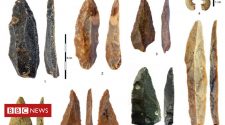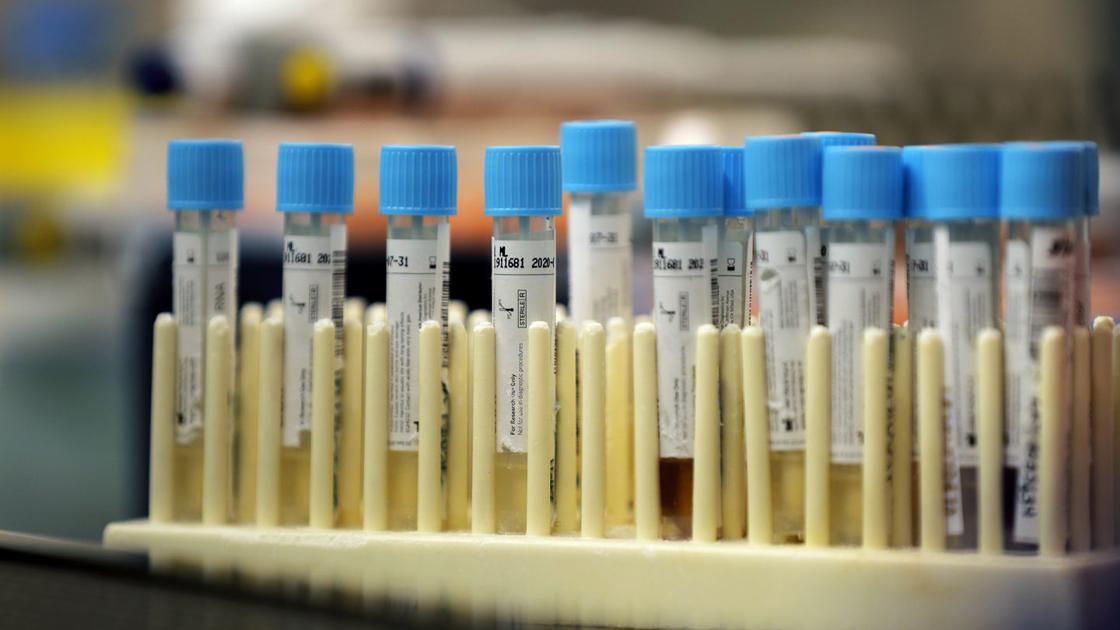Twenty people in Tulsa County have recovered from COVID-19 as Oklahoma continues to see drastic increases in confirmed cases of the disease.
Tulsa Health Department officials announced that fact Friday. Meanwhile, four more people in Oklahoma have died from COVID-19, bringing the total to 38, and 32 more have been hospitalized, bringing that total to 289, according to Oklahoma State Department of Health data released Friday.
By Friday, 988 confirmed cases had been reported in the state.
“It’s important to understand that most people who become infected will experience mild symptoms and they will recover,” Tulsa Health Department Executive Director Bruce Dart said. “Some individuals … will probably require hospitalization because their illnesses will be more serious.”
Dart said it would be vulnerable populations — older people and those with compromised immune systems or other underlying medical conditions — who likely will have more serious symptoms. COVID-19 is disproportionately affecting older populations in Oklahoma. About three-fourths of the state’s deaths have occurred in people older than 65 years old.
The chief symptoms are fever, cough and shortness of breath. Some patients have reported a loss of smell.
Social distancing and home isolation remain the doctor’s orders even for those who have no symptoms, since a person can carry the virus for two to 14 days after exposure before symptoms show.
Three of the deaths reported Friday occurred in Tulsa County. The other occurred in Cleveland County. All four who died were women who were older than 65.
Of the 38 total deaths in Oklahoma, eight were in Tulsa County.
So far, three of the deaths in Tulsa County stemmed from community spread of the infection. Two people who died had links to confirmed cases. Others had traveled to previously affected areas or were still under investigation Friday.
Tulsa Mayor G.T. Bynum said Friday that, based on the available data, the Tulsa area is still in the early stages of the pandemic. Tulsa’s geographic location “in the middle of the country” benefited the region by enabling health officials and experts to glean lessons from what has occurred elsewhere, he said.
“We took action early because that’s what all of the public health guidance gave us — that the earlier you act, the better your odds are of having a health care system that can handle this,” Bynum said.
Testing is foundational for health care providers to determine who needs to be quarantined, Dr. Kimberly Martin, an OU-Tulsa pediatric infectious diseases specialist, said in an email to the Tulsa World.
“Regardless of testing, we should all be practicing social distancing and home isolation as this is going to help to prevent new cases of COVID-19,” she said.
National and international health officials have previously advised that social distancing and home isolation may be required for several months to significantly reduce infections, Martin said.
“While this information is being updated constantly, people need to know that these measures really do work,” Martin said.
At the end of March, Bynum issued a shelter-in-place order for the city. It applies to all citizens, prohibits social gatherings and will be enforced by the Tulsa Police Department. He said on March 28 that data indicated that the height of projected infection in Tulsa could come between mid-April and mid-May.
Bynum presented a scenario in which 20,000 people in the Tulsa metro area may need hospitalization in the next two months for COVID-19 alone.
On Thursday, Gov. Kevin Stitt declared a health emergency in the state for the next 30 days. The declaration gives him greater powers to waive statutory or regulatory requirements and the ability to coordinate a response among city and county health departments.
The declaration also gives Stitt the power to allow former health care professionals to rejoin the workforce quickly and protect first responders by helping them manage their personal protective equipment.
Interactive graphic: Oklahoma COVID-19 cases by county, age group
See all of the Tulsa World’s coverage related to the coronavirus outbreak at tulsaworld.com
More than 1 million cases: How is the world handling the coronavirus pandemic?
United States: 258,214 cases, 6,605 deaths
Dr. Deborah Birx, White House coronavirus response coordinator, speaks March 31 at the White House flanked by President Trump and Vice President Pence.
On March 27 lawmakers passed a a $2.2 trillion rescue package to rush aid to businesses, workers and a health care system slammed by the coronavirus pandemic.
It’s the largest economic rescue bill in history and builds on efforts focused on vaccines and emergency response, sick and family medical leave for workers, and food aid.
It would give direct payments to most Americans, expand unemployment benefits and provide a $367 billion program for small businesses to keep making payroll while workers are forced to stay home.
The bill would provide one-time direct payments to Americans of $1,200 per adult making up to $75,000 a year, and $2,400 to a married couple making up to $150,000, with $500 payments per child
Italy – 119,827 cases, 14,681 deaths
A worker sprays disinfectant to sanitize Duomo square, as the city main landmark, the gothic cathedral, stands out in background in Milan on March 31.
The government on March 10 imposed a nationwide lockdown after an initial quarantine of a dozen small towns in Lombardy and Veneto failed to stop the spread of the virus. On March 26, Italy idled all non-essential production and industry, the most widespread manufacturing shutdown in the world.
Italian authorities say too many people are violating the national decree, which allows people to leave homes to go to workplaces, buy food or other necessities or for brief strolls outside to walk dogs or get exercise. Of hundreds of thousands of people stopped by police for checks, tens of thousands have received a summons for going out without valid reasons.
Currently, Italy only tests people showing symptoms, because its labs cannot process any more, and to date nearly 395,000 tests have been performed.
The Italian army’s Alpini mountaineering forces are building a field hospital to be staffed, in part, by some of the 150 medical personnel sent by Russia, one of only a handful of countries along with China and Cuba to respond to Italy’s urgent appeal for medical equipment, protective masks and personnel.
Spain – 117,710 cases, 10,935 deaths
Via Laietana street is deserted as authorities control public movements in Barcelona.
Spain on March 12 ordered its first mandatory lockdown, confining more than 60,000 people to four towns. The government has closed museums and sports centers, sent home nearly 10 million students, asked people to work remotely and limited crowds at public events in high-risk areas.
Spanish health authorities say intensive care units in the hardest-hit areas of Spain are close to their limit. The army was building a field hospital with 5,500 beds in a convention center in Madrid, where hotels are also being turned into wards for virus patients without serious breathing problems.
Nearly 15% of all those infected in Spain, almost 13,000 people, are health care workers.
Prime Minister Pedro Sánchez’s left-wing Cabinet is expected to add a new 700-million-euro aid package, including zero interest loans, as well as suspend evictions for families who can’t afford to pay their home rent.
France – 59,929 cases, 5,398 deaths
A child walks on the deserted Republique square on April 1 during a nationwide confinement.
President Emmanuel Macron urged employees to keep working in supermarkets, production sites and other businesses that need to keep running amid stringent restrictions of movement.
Travel between EU and non-EU counties has been shut down. People in Paris are required to carry a special document if they leave their homes explaining why.
China – 82,465 cases, 3,326 deaths
China is relaxing travel restrictions in the hardest-hit virus province of Hubei, sending thousands of workers back to jobs at factories desperate to get production going again.
At the same time, China is stepping up measures to prevent the virus from being brought back from overseas, requiring international flights into Beijing to first stop at airports outside the capital for inspection.
Beijing’s city government is requiring that the number of people in each office be limited to no more than 50% of usual staffing levels. Protective face masks are required, and office workers must be seated at least 3.3 feet apart. Workers are not supposed to face each other when eating.
Wuhan has closed emergency field hospitals, and China has sent personal protective gear and medical experts to Italy, Iran and other nations.
Iran – 53,183 cases, 3,294 deaths
Iran’s military completed work March 26 on a 2,000-bed field hospital in an exhibition center in the capital.
Iran will set up checkpoints to limit travel between major cities and urged citizens to reduce their use of paper money to fight the country’s outbreak. Authorities on March 6 warned they may use “force” to limit travel between cities.
Although Iran has one of the Mideast’s best medical services, its hospitals appear to be overwhelmed and; authorities have asked for 172 million masks from abroad. It also has asked the International Monetary Fund for $5 billion, the first such loan for Iran since 1962.
Friday prayers in Iran have been canceled across all provincial capitals. Friday is the main congregational day of prayer in Islam, and traditionally an important event for Iran’s clerical rulers.
Iran has closed schools and universities to stop the spread of the virus, major Shiite shrines have remained open despite civilian authorities calling for them to be closed. The holy cities of Mashhad and Qom in particular, both home to shrines, have been hard-hit by the virus. Shiites often touch and kiss shrines as a sign of their faith. Authorities have been cleaning the shrines with disinfectants.
United Kingdom – 38,688 cases, 3,611 deaths
Britain’s Prime Minister Boris Johnson visits a laboratory at the Public Health England National Infection Service in Colindale, north London on March 1. Johnson tested positive for COVID-19, officials announced March 27. Prince Charles has tested positive for COVID-19 as of March 25.
In London, home to almost 9 million, the government urged people to stay off public transportation as authorities considered imposing tougher travel restrictions. The British government is now drawing up legislation giving itself new powers to detain people and restrict gatherings.
On March 16, Johnson told people to eliminate unnecessary contact with others, working from home where possible and avoiding bars, restaurants, theaters and other venues.
Netherlands – 15,821 cases, 1,490 deaths
A sign asks visitors to observe social distancing in a field of tulips in Lisse, Netherlands, on March 26. The Dutch government extended its ban on gatherings to June 1.
In a TV address health minister Bruno Bruins ordered all Dutch schools, cafes, restaurants coffee shops, brothels, strip clubs and sport clubs to be closed from March 15 onward.
Germany – 89,838 cases, 1,230 deaths
The Pariser Platz square in front of the German landmark Brandenburg Gate is deserted in Berlin.
German authorities have issued a ban on more than two people meeting outside of their homes, which they believe will be easier to follow than locking people in their homes.
Bavarian Gov. Markus Soeder also said the state is implementing strict restrictions on visits to hospitals, retirement homes and other facilities where people may be particularly vulnerable.
Germany has seen far fewer deaths than other European countries with a similar number of reported infections. Experts said that rapid testing as the outbreak unfolded meant Germany has probably diagnosed a much larger proportion of those who have been infected, including younger patients who are less likely to develop serious complications.
Germany has partially closed its borders with five neighbor.
Central and South America – 767 deaths
The Obelisk monument is illuminated with the colors to symbolize the Italian national flag in Buenos Aires, Argentina.
Brazil’s governors are defying President Jair Bolsonaro, who contends lockdowns will deeply wound the already beleaguered economy and spark social unrest. On March 24 he urged governors to limit isolation only to high-risk people and lift strict measures they have imposed. The country’s governors said they would continue with their strict measures.
The governor of a state in central Mexico is arguing that the poor are “immune” to COVID-19. Mexico’s government this week broadened its shutdown of non-essential activities to the private sector and prohibits gatherings of more than 50 people.
Argentina: 37 deaths
Brazil: 329 deaths
Ecuador: 120 deaths
Dominican Republic: 60 deaths
Guyana: 1 death
Panama: 37 deaths
Guatemala: 1 death
Costa Rica: 2 deaths
Mexico: 50 deaths
Chile: 18 deaths
Peru: 55 deaths
Paraguay: 3 deaths
Colombia: 19 deaths
Honduras: 15 deaths
Venezuela: 5 deaths
Bolivia: 9 deaths
Cuba: 6 deaths
Uruguay: 2 deaths
El Salvador: 2 deaths
Middle East (outside Iran) – 573 deaths
Tahrir Square is closed off during curfew in Cairo, Egypt on March 29.
Iraq has seen 54 deaths, Egypt 58 deaths, Turkey 356 deaths, Bahrain four deaths, Saudi Arabia 25 deaths, Pakistan 35 deaths, Afghanistan six deaths, Jordan five deaths, United Arab Emirates eight deaths, Syria two deaths, Qatar three deaths and Lebanon 17 deaths.
In Egypt, a nationwide curfew from 7 p.m. until 6 a.m. started March 25. Afghanistan imposed a lockdown on its western Herat province, which borders Iran. Saudi Arabia expanded its curfew hours in the cities of Mecca, Medina and Riyadh. Residents now must remain inside their homes from 3 p.m. to 6 a.m. The kingdom also banned travel in or out of the three governorates. Pakistan halted all domestic passenger flights after reporting nearly 1,000 total cases. It had previously suspended train service and international flights.
In Dubai authorities announced all bars and pubs would be closed through the end of the month. Community pools across Dubai were locked on Monday, closed by developers for the same period.
The holy city of Mecca, which able-bodied Muslims are called to visit at least once in their lives, and the Prophet Muhammad’s mosque in Medina were cut off to potentially millions of pilgrims, with Saudi Arabia making the extraordinary decision to stop the spread of the virus.
South Korea – 10,062 cases, 174 deaths
A Buddhist monk trying to donate blood is checked March 24 for his temperature by a Korea Red Cross official.
Health authorities in South Korea have been actively using personal information — including immigration, public transportation, credit card and smartphone GPS data — to track patients and their contacts. Details about the places that patients visited before testing positive are posted online and shared through smartphone alerts to others.
Markets were shuttered while South Korea’s military sent hundreds of its doctors and soldiers to aid in treatment and quarantines. Bishops in South Korea shuttered churches for what they said was the first time in the Catholic Church’s 236-year history there.
The National Assembly passed a law strengthening the punishment for those violating self-isolation, more than tripling the fine and adding the possibility of a year in prison.
Japan – 1,953 cases, 56 deaths (712 cases, 10 deaths from cruise ship)
A cook wears a mask outside a restaurant March 26 in Tokyo. Japan’s Prime Minister Shinzo Abe is setting up a special task force to discuss coronavirus measures and emergency responses.
The Tokyo Olympics will be postponed for about one year.
Schools across the country were closed for weeks, affecting 12.8 million students.
Tokyo Disneyland and Tokyo DisneySea will be closed through March 15. Japan’s professional baseball league says it will play its 72 remaining preseason games in empty stadiums. A female patient tested positive for COVID-19 a second time despite being discharged from a hospital after contracting the virus previously.
India – 2,567 cases, 72 deaths
An Indian policeman wearing a virus themed helmet rides a horse during an awareness rally in Hyderabad, India, on April 2.
On March 24, Prime Minister Narendra Modi announced a three-week countrywide lockdown covering nearly one-fifth of the world’s population.
In recent days, India had gradually expanded stay-at-home orders, banned international and domestic flights and suspended passenger service on its extensive rail system until March 31.
India has implemented a 19th-century epidemic law that empowers public officials to enforce more rigorous containment measures and impose penalties and punishments for escapes.
India’s tourist ministry shut down the Taj Mahal, its iconic “monument of love,” to visitors.
Poland – 3,149 cases, 59 deaths
A mural pays tribute to Polish medical professionals during the coronavirus pandemic with the words “Not every hero wears a cape” in Warsaw.
Mass events are being canceled across the country and nearby Austria through April.
Over 4,000 people in Poland are under quarantined at home after having been potentially exposed to the virus.
Poland closed its borders to thousands of cross-border workers effective March 27; cross-border workers will be required to stay on one side of the border until April 11.
Sub-Saharan Africa – 6,000+ cases, 60+ deaths
A video of outbreak spread in West Africa in 2014 plays on a laptop at U.S. Army Medical Research and Development Command at Fort Detrick, Md., on March 19, 2020, where scientists are working to help develop solutions to prevent, detect and treat the coronavirus.
Twenty-four of Africa’s 54 countries already have fully closed borders, according to the Africa Centers for Disease Control and Prevention.
An unprecedented lockdown in South Africa started March 27 for 57 million people. Two people with COVID-19 were charged with attempted murder because they didn’t obey orders to isolate themselves. Dozens have been arrested for violations.
Dog-walking is barred in South Africa, along with running, alcohol sales and cigarette sales. Borders are closed to human traffic.
Israel – 7,030 cases, 36 deaths (West Bank/Gaza: 1 death)
A woman walks her dog March 23 at a closed food market in Tel Aviv.
The Church of the Nativity in Bethlehem, built atop the spot where Christians believe Jesus was born, will close indefinitely. The church was expected to draw tens of thousands of visitors and worshipers during the Easter holiday. The Palestinian Health Ministry meanwhile said it was preventing all tourists from entering the West Bank, where Bethlehem is located.
Authorities have closed all malls, restaurants, cinemas, gyms and day care centers, and have urged anyone who can work from home to do so.
The head of Israel’s shadowy Shin Bet internal security service said March 17 that his agency received Cabinet approval to start deploying its counter-terrorism tech measures to help curb the spread of coronavirus.
The new plan would use mobile-phone tracking technology and a review of credit card data to give a far more precise history of an infected person’s movements before they were diagnosed and identify people who might have been exposed. Those in jeopardy would then be notified by text message to self-quarantine.
Among other measures, Israeli health officials have put out public advisories ordering tens of thousands of people into protective home quarantine.
Russia – 4,149 cases, 34 deaths
Police officers walk across an empty Red Square in Moscow, on March 31, when the Russian capital woke up to a lockdown obliging most people in the city of 13 million to stay home. The government ordered other regions of the vast country to quickly prepare for the same as Moscow.
Russia’s parliament approved harsher punishments for violating quarantine regulations and spreading “fake news.”
Evading quarantine will be punishable by heavy fines, and if it leads to two or more people dying, by up to seven years in prison.
Heavy fines are outlined for those who spread misinformation about the outbreak. If it results in a death, then the perpetrator faces up to five years in prison.
Greece – 1,544 cases, 53 deaths
On April 2 southern Athens is empty during the lockdown. Deserted squares, padlocked parks, empty avenues where cars were once jammed bumper-to-bumper in heavy traffic.
Greek health authorities have warned people to stay home, and have shut down everything from restaurants, bars and cafes to public organized beaches, ski resorts, hair salons and movie theaters.
Greece has been on lockdown for just over a week, with people allowed to leave their homes only for certain limited reasons.

















